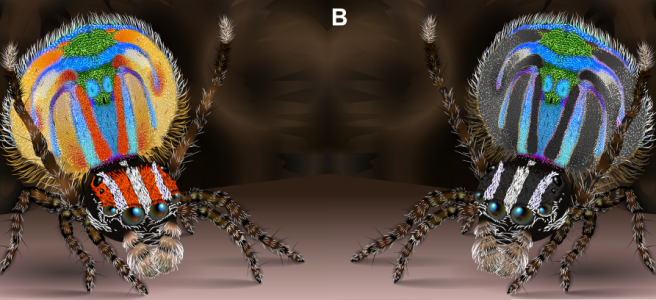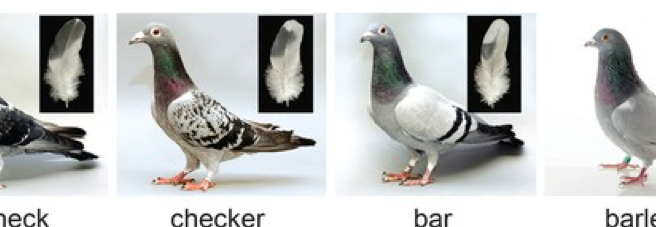How do animals choose their mates? Dr. Maddie Girard and Dr. Damian Elias were pretty sure they knew what female peacock spiders found sexy—it had to be the red. Found throughout Australia, these tiny jumping spiders have excellent vision, and instead of a making a web, they sneak, climb, and pounce to catch their food. … Continue reading Seeing red in a new light: Peacock spider courtship defies our human assumptions
Category: Signaling
Lessons from the Urban Pigeon
There is an entire community of pigeon collectors living amongst us. They marvel at the diversity of plumage, color, and patterning that this single species displays. In fact, none other than Charles Darwin himself fancied the pigeon species. These pigeon enthusiasts understand that we can learn a lot from pigeon diversity. In a recent publication, … Continue reading Lessons from the Urban Pigeon
New firefly breeding patterns light the way for changes in color vision
A staple of warm summer nights, fireflies have charmed generations with their magical evening glow. Children setting out to capture them in jars can tell you the trick is to catch sight of each flash of light as the bugs fly around. What we might not realize as children is that fireflies emit their greenish … Continue reading New firefly breeding patterns light the way for changes in color vision
I’ll have what she’s having: Manipulation in chimpanzee copulation calls
When we think about animal relationships, some endearing examples of devoted couples come to mind: emperor penguins that faithfully guard their hatchlings for weeks while they wait for their mate to return; love birds (not surprisingly) that groom and feed each other during courtship, and some species of monkeys that intertwine their tails as they … Continue reading I’ll have what she’s having: Manipulation in chimpanzee copulation calls
I’m looking at the fish in the mirror: a tail of social signaling
Just as we exploit social media to self-promote, find mates, and flaunt social status, animals use visual, olfactory, auditory, or mechanical displays to communicate with one another. Like a Facebook status, these displays often communicate some internal attribute about the organism. A well-known example of this type of signaling is the vibrant tail-feathers of the … Continue reading I’m looking at the fish in the mirror: a tail of social signaling
Are male bats actually making echolocation harder to impress the ladies?
We tend to view sexual selection as secondary to natural selection, but nothing is second to the imperative to reproduce. Sometimes that means that even precisely engineered traits like echolocation have room to be a little sexier. Could falsetto calls really be a signal of male quality in the Mehelyi's horseshoe bat?






